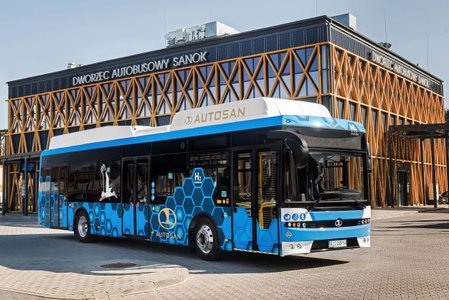





-
Application
- Industry
- Heating industry
- Individual solutions
- Law regulations
- Certification
- Research and development
- Public perception
- Investment map
-
Transport
- Hydrogen buses
- Hydrogen trains
- Special vehicles
- Law regulations
- Certification
- Research and Development
- Public perception
- Investment map
-
Production
- Technology
- Green hydrogen from Renewable Energy Sources
- Grey hydrogen
- Hydrogen production from biomass
- Law regulations
- Certification
- Research and development
- Public perception
- Investment map
-
Transmission, Storage



Cookies
Informujemy, iż w celu optymalizacji treści dostępnych w naszym serwisie, dostosowania ich do Państwa indywidualnych potrzeb korzystamy z informacji zapisanych za pomocą plików cookies na urządzeniach końcowych użytkowników. Pliki cookies użytkownik może kontrolować za pomocą ustawień swojej przeglądarki internetowej. Dalsze korzystanie z naszego serwisu internetowego, bez zmiany ustawień przeglądarki internetowej oznacza, iż użytkownik akceptuje stosowanie plików cookies. Czytaj więcej Polityka prywatności
Transport
Polish patents for hydrogen buses
Polish manufacturers are developing their own hydrogen bus designs. Service costs of such vehicles are lower than for analogous buses with diesel engines. Operation costs are also lower, as hydrogen is already available at the price of EUR 4 per 1kg - these are the most important conclusions from the last meeting of the Wodór2030.pl initiative with self-governments.The Wodór2030.pl initiative
At the next meeting of the Wodór2030.pl initiative with self-governments, Polish bus manufacturers - AUTOSAN and ARP e-Vehicles - presented their solutions.
New hydrogen bus of AUTOSAN
Łukasz Gladysiewicz, Deputy Technical Director and Chief Constructor at AUTOSAN, presented technical details of the new model SANCITY 12LFH, which is currently undergoing road tests and in the first quarter of 2022 is expected to receive homologation. - The range of our new vehicle is up to 400 km. We have used as many as 3 batteries mounted in the rear overhang, which will extend the life of the cell. We know that there is currently no operational data on the market that speaks clearly about the durability of this element over the entire life of the bus, that is over 15 years - said Gladysiewicz. He noted that the bus manufacturer from Sanok has increased the range of the new vehicle while maintaining the maximum life of the cell.
Components for the construction of the new bus come only from proven suppliers and thus we have guaranteed high quality - he stressed.
– We assume that every 6-7 years it will be necessary to regenerate the cell or replace it with a technologically newer, or more efficient and more durable component. The filters in the cell should be changed every six months.
Łukasz Gladysiewicz, Deputy Technical Director and Chief Constructor at AUTOSANThe bus is 100% enission-free. For example, the heating unit is powered by the waste energy of the cell. - We have gained a lot of experience in the production of hybrid vehicles, because a hydrogen bus is basically a hybrid vehicle, and now it is paying off - he pointed out. Safety is also a priority. SANCITY 12LFH, as befits a modern construction, can be equipped, among others, with radar detecting possible collisions and a system for monitoring driver activity. An active braking system is also planned for the safety equipment. - Soon, we will receive permission from TDT for serial production of hydrogen buses - concluded the representative of AUTOSAN sp. z o.o.

ARP E-Vehicles, or from batteries to hydrogen
About a slightly different concept of development of a hydrogen drive in buses at the meeting told the representatives of ARP E-Vehicles. - We want our hydrogen buses to be refined and our road to hydrogen is a bit different, because for now we are refining our battery bus. Certainly 2030 will definitely be the year of hydrogen. We are therefore planning to introduce the possibility of upgrading our battery buses to hydrogen. [read more about this concept here https://www.transport-publiczny.pl/mobile/gotowi-na-wodor-71035.html] Our vehicles as built from scratch with electric drive in mind, structurally they are already ready for hydrogen - said Mariusz Wdowczyk, CEO of ARP e-Vehicles at the meeting with local authorities. The company is also working on a hydrogen bus, and the participants of the meeting of the Wodór2030.pl initiative learned about it as the first on the market.
We are starting with a 12-metre version, which will be adapted to run on hydrogen. We plan to place the tanks on the roof for now, but eventually, as the technology develops, they will be located under the floor. The planned range will be up to 600 km. Other technical specifications are in the process of being parameterised. We are going to extend our range with a hydrogen vehicle, because both solutions, i.e. a bus powered by electricity from the grid and a hydrogen one, have a raison d'être and are needed on the market.
Michał Maćkowiak, Vice-President of the Board of ARP E-eehicles responsible for research and developmentCosts of hydrogen lower than diesel already today
As far as the operating costs of a hydrogen bus are concerned, they are lower than for a similar vehicle with a diesel engine. - The brake system has virtually no wear and tear, and these are big savings. Brake discs and pads are the main mechanical components that are replaced over the first few years in a diesel vehicle. There is also no oil change, so these are significant amounts saved on materials and labour - noted Łukasz Gladysiewicz. Michał Maćkowiak echoed that electric buses are cheaper than combustion ones in terms of maintenance. - Their maintenance cost over the entire product life cycle is already equal to or lower than a diesel bus - said Maćkowiak. Speakers at the meeting with local authorities stressed that to operate hydrogen buses one needs suitably qualified personnel. - Most of the operators must have special qualifications to operate G1 (gas). Most of the employees operating e.g. CNG already have such licences - said Gladysiewicz. In turn, Maćkowiak spoke about the necessity of broadening the cooperation with universities.
– There is a need for close cooperation between industry and science. We do this in cooperation with the Nicolaus Copernicus University in Toruń and the universities in Bydgoszcz. We are on the right track, we have a hydrogen strategy recently adopted by the government, there is funding available from the EU and national programmes, so there is a concrete framework to create a new ecosystem - said a representative of IDA e-Vehicles.
One kilo of hydrogen for 4 euros available now
An important issue for local governments planning to introduce hydrogen buses is the cost of fuel. It turns out that media information that 1 kg of hydrogen costs around 9- 10 euro per 1 kg is very outdated. Andrzej Szałek, Board Advisor of Toyota Motor Poland, stressed that even today it is possible to buy hydrogen for transport purposes at the price of 4 euro per 1 kg without any problem. This information was confirmed by Łukasz Gladysiewicz from the AUTOSAN company, stipulating at the same time that transport costs are a separate issue. In Poland, there are already at least 4 locations where the production of green hydrogen will soon be launched.
– We must have our own sources of green hydrogen production in Poland, in order to develop the hydrogen economy. I understand the doubts of local authorities about implementing hydrogen, but this technology is already so widespread that the question is not 'if' but 'when'. The sooner we do it, the better position Poland will have on the European and world map of hydrogen economy - emphasised Szałek.
Gas networks may be used to transport hydrogen
Hydrogen can be transported over long distances using gas pipelines. While technologies for transporting hydrogen in pressure vessels are already well developed, hydrogen transmission via natural gas pipelines is still the subject of much research and testing. The European Network of Transmission System Operators for Gas Entsog identifies three options for injecting hydrogen into the gas infrastructure: transmission via dedicated pipelines, the addition of hydrogen to natural gas or the introduction of e-methane, which results from the methanisation of hydrogen.
There is no single answer to the question to what extent the addition of hydrogen to natural gas is safe for all components of the gas system and for end consumers. Due to the specific physical and chemical properties of hydrogen, its transport through gas networks is much more difficult than that of natural gas. The energy density of hydrogen in gaseous form is approximately one third that of natural gas per unit volume, so the addition of 10% hydrogen by volume reduces the energy value of the gas transported by approximately 7%.
Above all, hydrogen is extremely light - its density is 0.082 kg/m³, while the density of high-methane natural gas is approximately 0.75 kg/m³. In order to transport hydrogen in gaseous form, compression is required and due to the lower density of hydrogen than natural gas, a higher pressure is needed. The capacity of a compressor designed for natural gas will be lower with the addition of hydrogen. Compressors turn out to be the part of the gas infrastructure with the lowest tolerance for hydrogen, which also tends to inject less hydrogen than the network capacity.
An important criterion for adding hydrogen to a gas is the explosion threshold. An explosive mixture of pure hydrogen ignites with an energy as low as 0.01 mJ, which is 28 times lower than the minimum ignition energy of methane (0.28 mJ). On the one hand, the addition of hydrogen to natural gas will reduce the safety of gas transmission, on the other hand, it offers the possibility of transmitting explosive hydrogen and increasing its use.

The possible percentage addition of hydrogen to the transmitted natural gas also depends on the chemical composition of the steel pipelines. Hydrogen has a high rate of diffusion through porous barriers, including some metals. It therefore affects components of the gas system, such as pipes, compressor units and gas quantity and quality measurement systems.
For the same volumes at the same pressure ranges, the amount of hydrogen energy transferred is lower than for natural gas. Depending on the EU country, the maximum concentration of hydrogen in natural gas varies from 2% to 10% in Germany, provided that no CNG stations are connected to the network.
In Poland, the addition of hydrogen to natural gas networks is not used. Analyses of the impact of hydrogen on the gas transmission network were conducted by Gaz System, and such studies are also being conducted by the Oil and Gas Institute. However, PGNiG plans to build a closed network in Odolanów, where it will test the possibility of using hydrogen in gas networks. The results of research so far indicate that in some parts of the natural gas system in Poland, it is possible to inject up to 10 per cent of hydrogen by volume in natural gas.
It should be remembered that hydrogen pipelines are the most cost-effective option for long-distance supply. The European Hydrogen Backbone (EHB) estimates the average cost of transporting hydrogen at EUR 0.11-0.21/kg/1000 km, which would have very little impact on the final price of the hydrogen itself. In Europe, gas pipelines have different diameters, typically 20-48 inches, and operate at different pressures, typically in the 50-80 bar range. EHB has calculated that the most cost-effective option for transporting hydrogen is to adapt existing gas pipelines, as this is at least twice as expensive as building new, dedicated pipelines.
The process of transporting a mixture of hydrogen and natural gas must become technically and economically feasible. In Poland, there are as yet no unambiguous guidelines which would define the parameters for transporting hydrogen as an admixture to natural gas.
Redakcja





